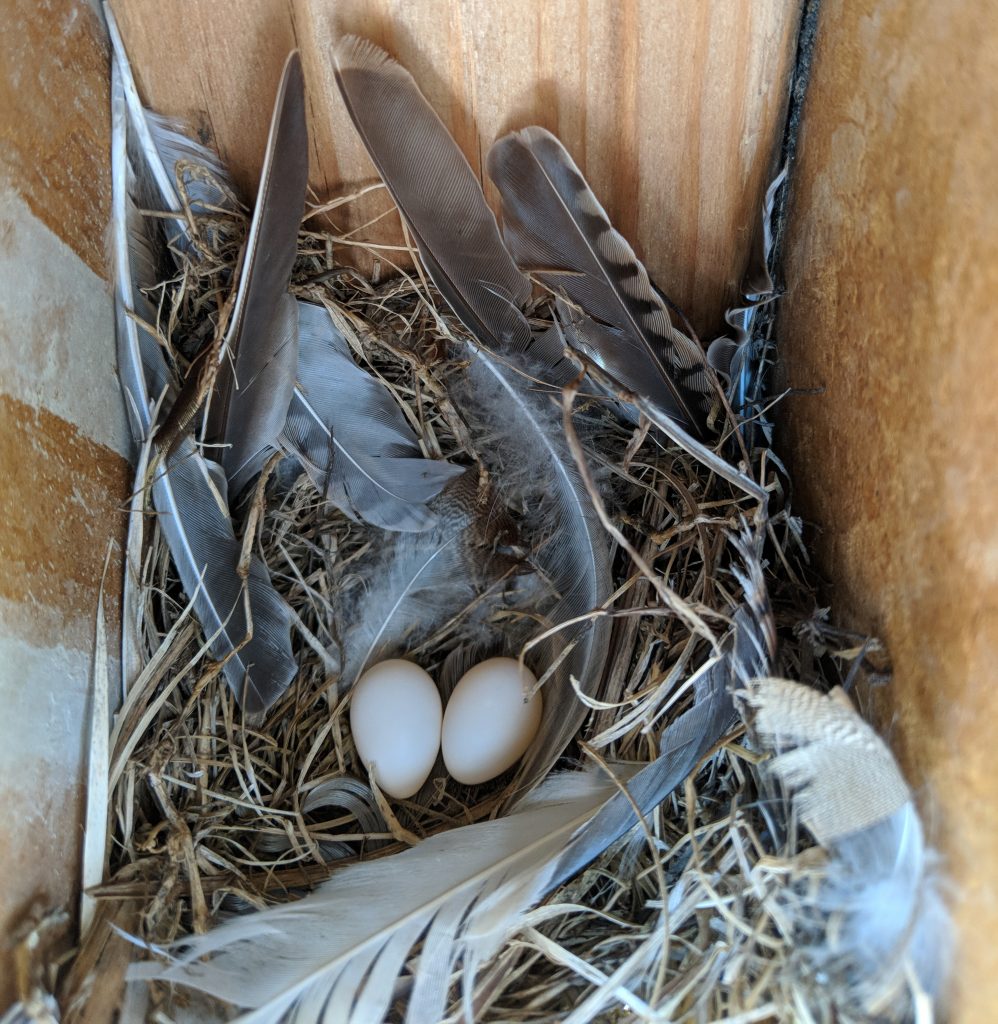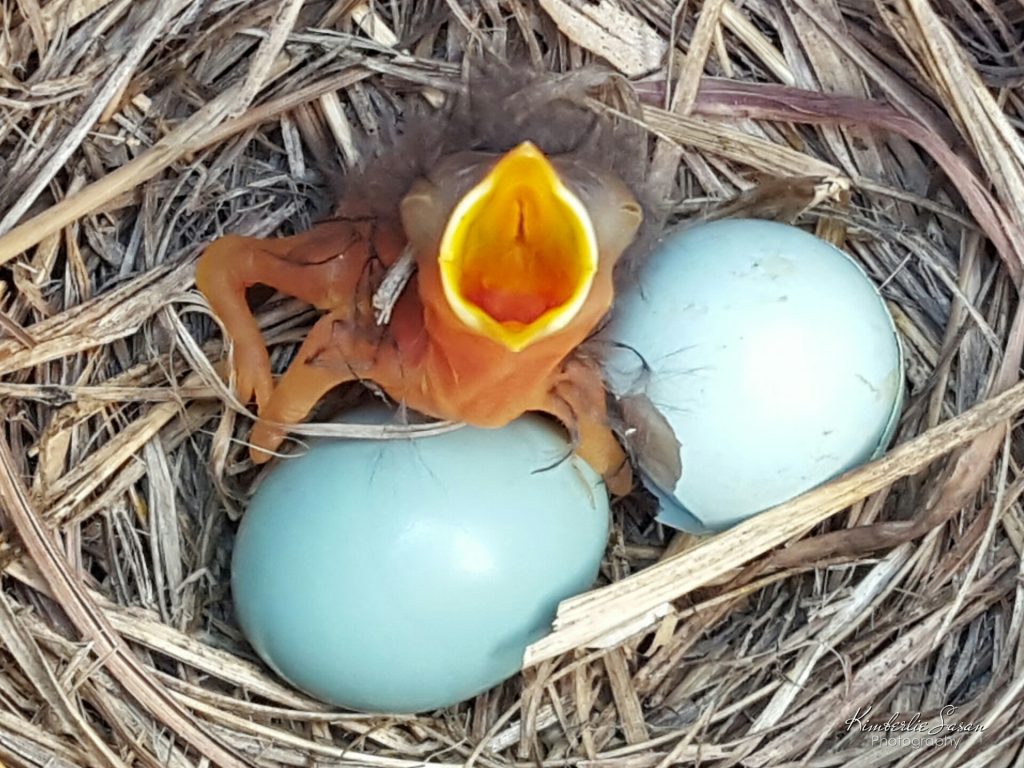Buckeye Birds Track Temperature And Precipitation
February 25, 2019By Robyn Bailey, NestWatch Project Leader

Tree Swallow Eggs
A feathery nest of a Tree Swallow contains two eggs, with more to come.
In America’s heartland, farmers rely on birds to help suppress agricultural pests. In fact, it’s why many of them install nest boxes around their farms. If climate change is predictably causing nesting birds to start nesting earlier in the spring as temperatures warm (as several studies suggest), this could mean that insectivorous birds will become out of sync with their insect prey. That wouldn’t be good for either the birds or the farmers. Considering this, researchers set out to test which climate variables most correlated with the onset of egg-laying in both Eastern Bluebirds and Tree Swallows in Ohio. In a new study published in American Midland Naturalist, Jesse Sockman and Jason Courter of Malone University analyzed 4,417 Ohio nest records submitted from 2000-2015 to NestWatch. Bluebirds in Ohio, as in most parts of their range, are double-brooded, so only their first nests of the year were used in this study. Tree Swallows are single-brooded and therefore any Tree Swallow nest could be utilized.
Sunny Days or Rain Delays?
As expected, both species started nesting earlier in more southerly parts of the state, but latitude alone did not explain the variation in when birds start to lay eggs. The study concludes that Eastern Bluebird first-egg-dates were earlier in warmer springs but later in wetter springs. Tree Swallows, on the other hand, did not seem to be impacted by spring temperature as much, but, like bluebirds, they did initiate egg-laying later in wetter springs. Both species, fortunately, did overlap with insect pest life cycles in ways that would help control the pests. Birds want to be nesting when the most prey are available to feed their youngsters, and it appears that they are still within this range in Ohio.

Timing Is Everything
An Eastern Bluebird nestling awaits a meal, while its siblings struggle to break free from their shells.
Insects, Birds, and the Future
Tree Swallows seemed to be more closely tracking a measure of accumulated heat known as “growing degree-days”; whereas Eastern Bluebirds did not coincide with this measure of cumulative warmth. Growing degree-days (as opposed to calendar day) is a temperature-based concept familiar to most farmers because it provides a measure of seasonal crop progress and a guide for timing farm management activities such as pesticide and herbicide application. Insect pests such as the Eastern tent caterpillar, gypsy moth, inkberry leafminer, and lilac borer (among others) are significant agricultural pests which impact growers economically, and their emergence maps well onto the growing degree-day concept. If birds can act as biological controls and suppress the crop pests, farmers may benefit from increased avian diversity on their property. However, climate models are predicting warmer annual temperatures and wetter springs in the study region over the next century, further complicating the interpretation of these results. For example, could temperature-related advancements be offset by precipitation-related delays in nesting? Or are Eastern Bluebirds and Tree Swallows actually tracking some unmeasured variable such as insect abundance?
One of the study’s authors, Dr. Jason Courter, explains that it’s very difficult to predict how a changing climate will affect birds. He did, however, express his gratitude to NestWatchers for their help in this study, saying “We are grateful for the countless volunteers who have faithfully submitted nesting observations over these 16 years through NestWatch and made a project of this magnitude possible.” Indeed, thank you NestWatchers for providing thousands of nests each year to support studies like this!
Reference:
- 2018. Sockman, J., and J. Courter. The impacts of temperature, precipitation, and growing degree-days on first egg dates of Eastern Bluebird (Sialia sialis) and Tree Swallow (Tachycineta bicolor) in Ohio. American Midland Naturalist 180(2): 207-215. doi: https://doi.org/10.1674/0003-0031-180.2.207.

2 comments on “Buckeye Birds Track Temperature And Precipitation”
WOW! birds are so smart!
birds are cuter than a sleeping fox in Minecraft…